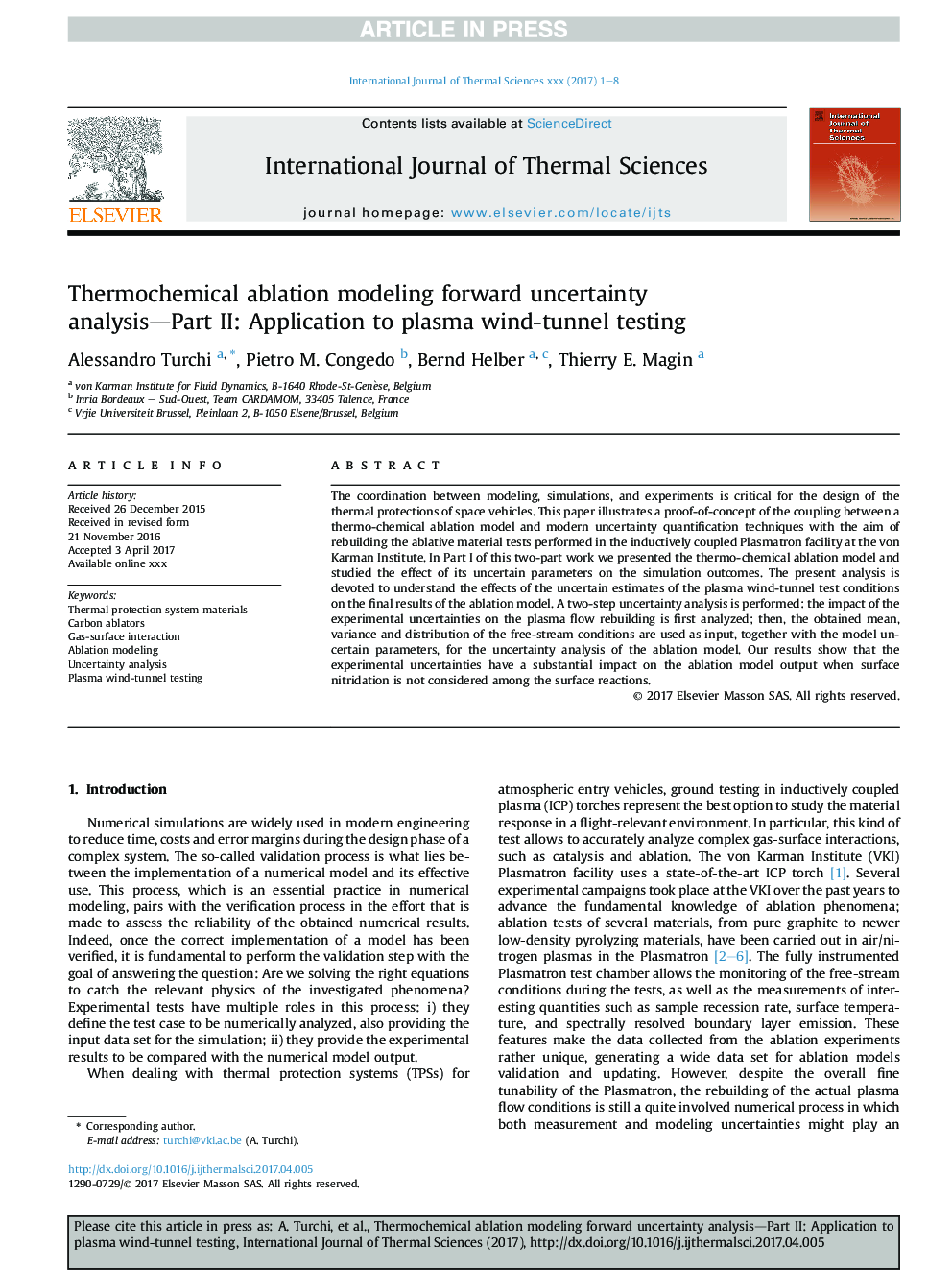| Article ID | Journal | Published Year | Pages | File Type |
|---|---|---|---|---|
| 4995296 | International Journal of Thermal Sciences | 2017 | 8 Pages |
Abstract
The coordination between modeling, simulations, and experiments is critical for the design of the thermal protections of space vehicles. This paper illustrates a proof-of-concept of the coupling between a thermo-chemical ablation model and modern uncertainty quantification techniques with the aim of rebuilding the ablative material tests performed in the inductively coupled Plasmatron facility at the von Karman Institute. In Part I of this two-part work we presented the thermo-chemical ablation model and studied the effect of its uncertain parameters on the simulation outcomes. The present analysis is devoted to understand the effects of the uncertain estimates of the plasma wind-tunnel test conditions on the final results of the ablation model. A two-step uncertainty analysis is performed: the impact of the experimental uncertainties on the plasma flow rebuilding is first analyzed; then, the obtained mean, variance and distribution of the free-stream conditions are used as input, together with the model uncertain parameters, for the uncertainty analysis of the ablation model. Our results show that the experimental uncertainties have a substantial impact on the ablation model output when surface nitridation is not considered among the surface reactions.
Related Topics
Physical Sciences and Engineering
Chemical Engineering
Fluid Flow and Transfer Processes
Authors
Alessandro Turchi, Pietro M. Congedo, Bernd Helber, Thierry E. Magin,
